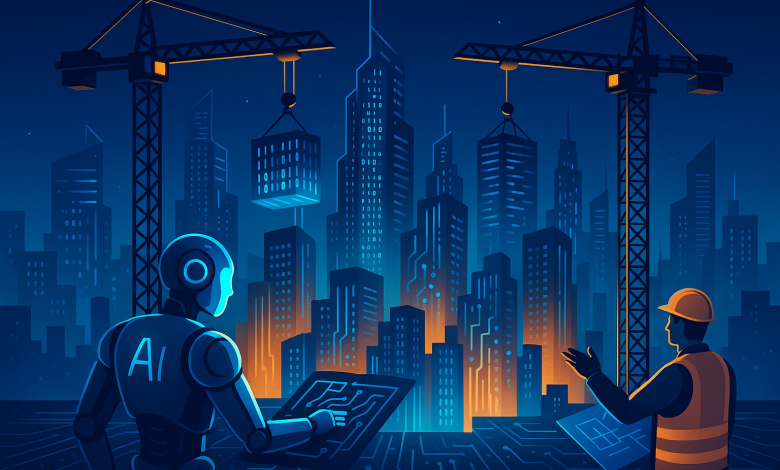
Industry headlines shriek about disruption: “AI is destabilizing the market.” “Tech is moving too fast.” The tone is breathless, and the framing is panicked
What might seem like chaos in the short term almost always ends up laying the foundation for the next era of stability and growth. We’ve seen this movie before, and we know how it ends.
Every Shock Becomes a Building Block
After the dot-com crash, many in our industry thought tech was finished. Instead, a new era was beginning: Amazon quietly built the infrastructure to expand beyond books, and Apple put a thousand songs in our pockets. This collective rubble ultimately became the foundation for Web 2.0.
The 2008 financial crisis begat a similar story. The “sharing economy” rapidly emerged, cloud computing took off, and suddenly a whole new wave of companies, including the likes of Uber, Airbnb, and WhatsApp, could scale globally.
Even COVID, which upended every part of daily life, accelerated remote work, ecommerce, streaming, and telehealth. Tech didn’t cause the instability. Instead, tech helped rebuild from it.
This pattern is reliable: The world wobbles, and tech resets the foundation.
AI Isn’t Chaos. It’s Architecture.
That’s exactly where we are today. AI isn’t just the next wave of disruption; it’s the next stabilizing force for the global economy, and programmatic advertising is proving the point.
The numbers speak for themselves here. In programmatic alone, 83% of senior brand marketers now use AI for targeting digital ads, while AI-fueled contextual advertising is projected to reach $562.1 billion by 2030. In addition, 75% of all CTV transactions are now programmatic, while more than 4 in 5 programmatic display ad dollars will transact via programmatic direct and private marketplaces, a massive shift toward quality and transparency that AI enables at scale
Meanwhile, AI guides investment at the highest level. Microsoft boosted capital spending nearly 80% to fuel AI infrastructure on Azure. Meta’s capex jumped 36% in a single quarter. Cisco bought Splunk for $28 billion; HPE snapped up Juniper for $14 billion. These aren’t moonshot bets, either. They’re long-term foundational AI plays that are already paying off in earnings.
AI is the scaffolding for the new global economy, and scaffolding must be built with the utmost care. Just as cloud adoption demanded new norms for data security and compliance, AI will force global standards on transparency, consent, and ethics. If companies aren’t willing to invest in building trust around these new technologies, they don’t deserve to lead in this new AI-driven world.
That’s an important point: Investments in AI aren’t guaranteed wins. Intention matters. It’s not going to take long for the market to weed out the players that are building for sustainability from those making a quick cash grab.
The Future Isn’t Centralized
But here’s the real shift: This isn’t an arms race where the biggest companies hoard the prize. AI’s impact will come from how widely it’s adopted and customized.
Every business, from a global brand to a two-person startup, is finding ways to fine-tune AI for its own needs. In programmatic advertising, this democratization is already visible, with more AI-powered tools on the market that open the kind of real-time bidding capabilities that were once exclusive to the tech giants. The more distributed it becomes, the stronger the global marketplace gets. That’s a rare dynamic: The same tech that elevates giants also empowers the underdogs.
The Question Isn’t If, But How
So where does that leave us? The transformation is well underway. The only question is: Who leans in, and who freezes?
History is clear: The companies that resist inevitable change get left behind. The ones that embrace it shape the future.
AI will supercharge productivity, sharpen decision-making, and unlock solutions we haven’t even imagined. But it can’t steer the ship without a captain. Humans still set the course, so the winners will be the companies that use AI not to replace human ingenuity, but rather to enhance it.
Forward-looking leaders won’t simply bank those efficiencies as cost savings. Instead, they’ll reinvest in their people by creating new roles, training paths, and opportunities that accelerate AI’s benefits inside the organization and within the products and services they bring to market. Companies that treat AI as a zero-sum labor arbitrage will struggle to realize its full value. Those that see it as a catalyst for new kinds of human contribution will define the next era of growth.
The first step on this path to greater stability is to stop wringing our hands over whether AI will disrupt. (It already has!) The real question is: What are we going to build on top of it?
If we get this right, AI won’t destabilize the market. It will cement its foundation for everyone


